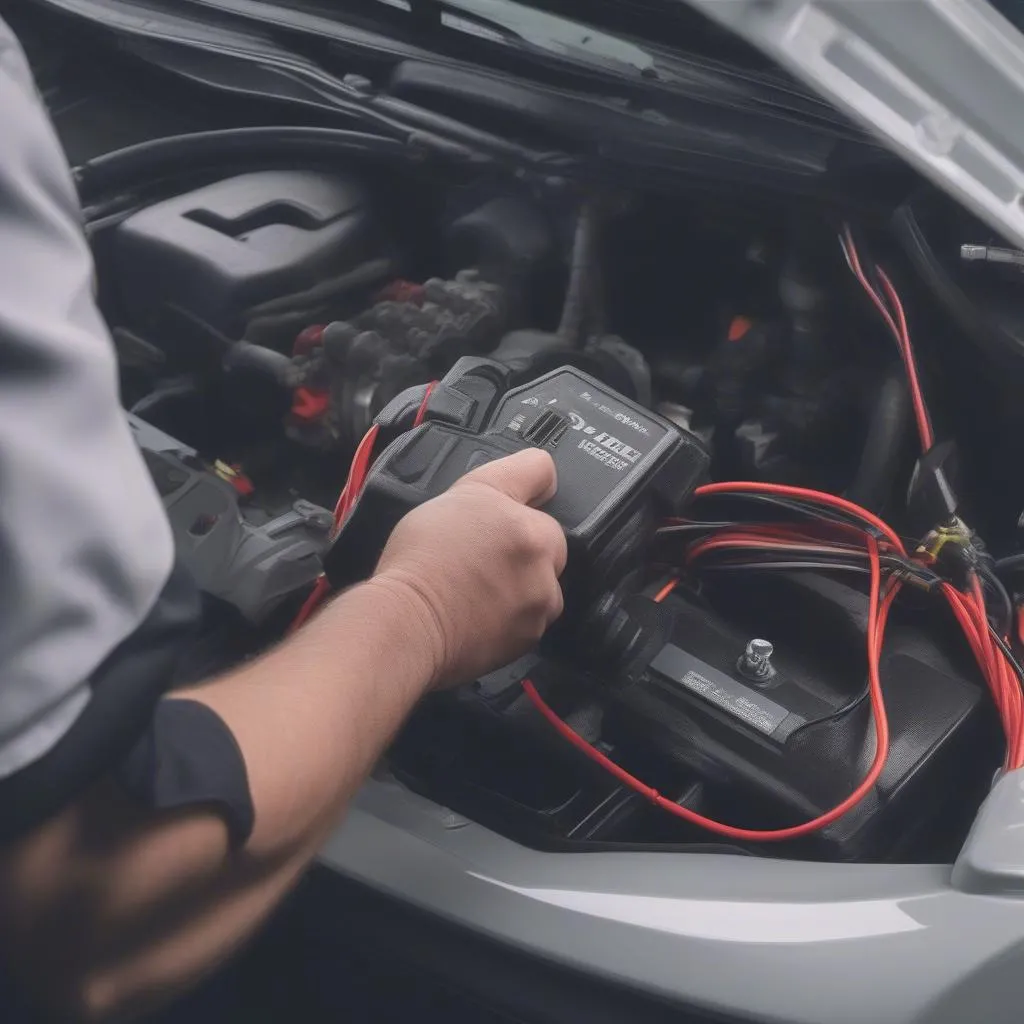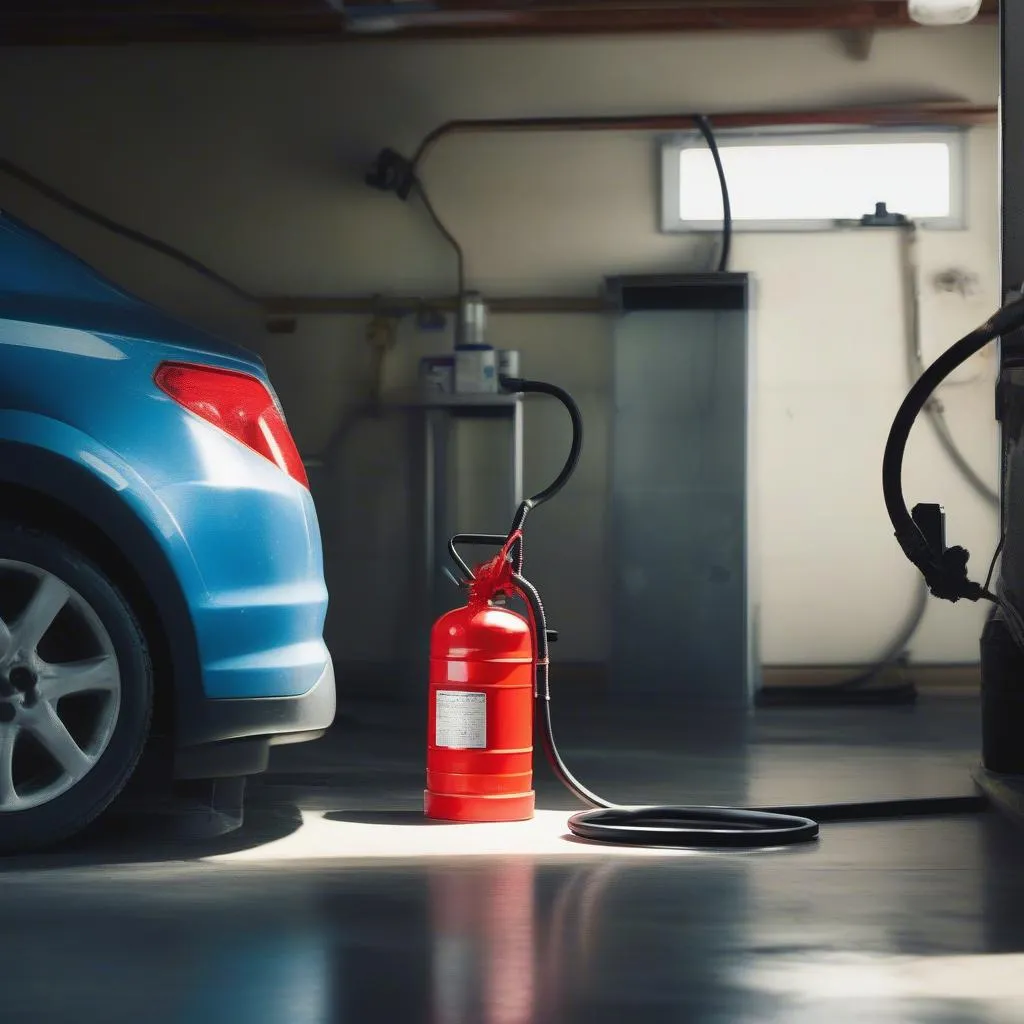Dealing with a malfunctioning anti-theft immobilizer can be incredibly frustrating. Your car might refuse to start, leaving you stranded. While the thought of tackling this issue yourself might seem daunting, this guide will provide a clear roadmap on how to replace your anti-theft immobilizer, empowering you to take control and get back on the road.
Understanding the Problem: Why Replace Your Immobilizer?
Before diving into the replacement process, it’s essential to understand why your immobilizer might need replacing. Here are some common signs:
- Engine Won’t Start: This is the most obvious sign. Your immobilizer might be preventing the engine from starting if it doesn’t recognize your key’s signal.
- Anti-Theft Light Stays On: A constantly illuminated or flashing anti-theft light on your dashboard usually indicates a problem with the immobilizer system.
- Key Fob Malfunctions: If you’re experiencing issues with your key fob, like unlocking the doors or remotely starting the car, it could point to a faulty immobilizer antenna or receiver.
Ignoring these signs can lead to more significant problems down the line.
Identifying the Culprit: Is it Really the Immobilizer?
Pinpointing the root cause of your car troubles is crucial before replacing any part. Here’s how to ensure the immobilizer is the issue:
- Check Error Codes: Use an OBD-II scanner to read your car’s Diagnostic Trouble Codes (DTCs). Codes related to the immobilizer, like P0335 (Crankshaft Position Sensor A Circuit Malfunction) or P1631 (Immobilizer No Or Wrong Signal), strongly suggest an immobilizer issue.
- Inspect Key Fob Battery: A dead key fob battery can mimic immobilizer issues. Replace the battery and try again.
- Visual Inspection: Examine the wiring and connections around the immobilizer system for any visible damage or loose connections.
Gearing Up: Tools for the Job
Having the right tools simplifies the replacement process. Here’s what you’ll need:
- New Immobilizer Kit: Ensure this kit is compatible with your car’s make and model.
- OBD-II Scanner: Essential for clearing error codes after the replacement.
- Basic Hand Tools: Screwdrivers, wrenches, pliers, etc.
- Electrical Tape: For securing any new wiring connections.
 Tools for Replacing Anti-Theft Immobilizer
Tools for Replacing Anti-Theft Immobilizer
The Replacement Process: Step-by-Step
While the exact procedure can vary slightly depending on the car model, the general steps remain consistent:
- Disconnect the Battery: Begin by disconnecting the negative terminal of your car battery as a safety precaution.
- Locate the Immobilizer: The immobilizer is typically located near the steering column, behind the dashboard, or around the ignition switch. Consult your car’s repair manual for its exact location.
- Remove the Old Immobilizer: Disconnect the wiring harness connected to the old immobilizer unit. Unscrew and remove the old unit from its mounting bracket.
- Install the New Immobilizer: Mount the new immobilizer unit in place of the old one and reconnect the wiring harness.
- Program the New Immobilizer: This step usually requires using your OBD-II scanner and following the instructions provided in your immobilizer kit. Programming ensures the new immobilizer synchronizes with your car’s ECU and key.
- Reconnect the Battery: Once programming is complete, reconnect the negative terminal of your car battery.
- Test the System: Turn on the ignition and check if the anti-theft light behaves normally. Attempt to start your car.
 Installing Car Immobilizer Unit
Installing Car Immobilizer Unit
Frequently Asked Questions
Here are answers to some common questions about anti-theft immobilizers:
Q: Can I bypass the immobilizer system in my car?
A: While technically possible, bypassing the immobilizer is highly discouraged. Doing so compromises your car’s security and can make it easier to steal.
Q: How much does it cost to replace an anti-theft immobilizer?
A: The cost varies depending on the car make and model and whether you opt for a professional installation or a DIY approach. On average, expect to pay between $100 to $500 for the immobilizer unit itself, and an additional $100 to $200 for labor if professionally installed.
Q: My car still won’t start after replacing the immobilizer. What could be wrong?
A: There are a few possibilities. The new immobilizer might not be programmed correctly, or there could be a separate issue unrelated to the immobilizer, such as a faulty starter motor or a dead battery. “Double-check the immobilizer programming steps and consider using a diagnostic tool like those offered by Cardiagtech to pinpoint the problem,” advises John Smith, a seasoned automotive electrician and author of “Automotive Electrical Systems Demystified”.
Q: Can a locksmith program a new immobilizer key?
A: Yes, many qualified automotive locksmiths have the necessary tools and expertise to program new immobilizer keys.
Need Help? Contact Cardiagtech!
While replacing an anti-theft immobilizer can be a DIY project, seeking professional help is recommended if you’re uncomfortable working with car electronics. Cardiagtech provides expert diagnostic and programming services for all your automotive needs. Learn more about our services.
If you’re experiencing issues with your car’s anti-theft system, don’t hesitate to reach out to CARDIAGTECH for assistance. We can help you get back on the road safely and efficiently. Contact us today!
This guide provides a starting point for replacing your anti-theft immobilizer. Always refer to your car’s specific repair manual and consult with a professional if needed. Remember, safety and proper procedures should always be your top priorities.

